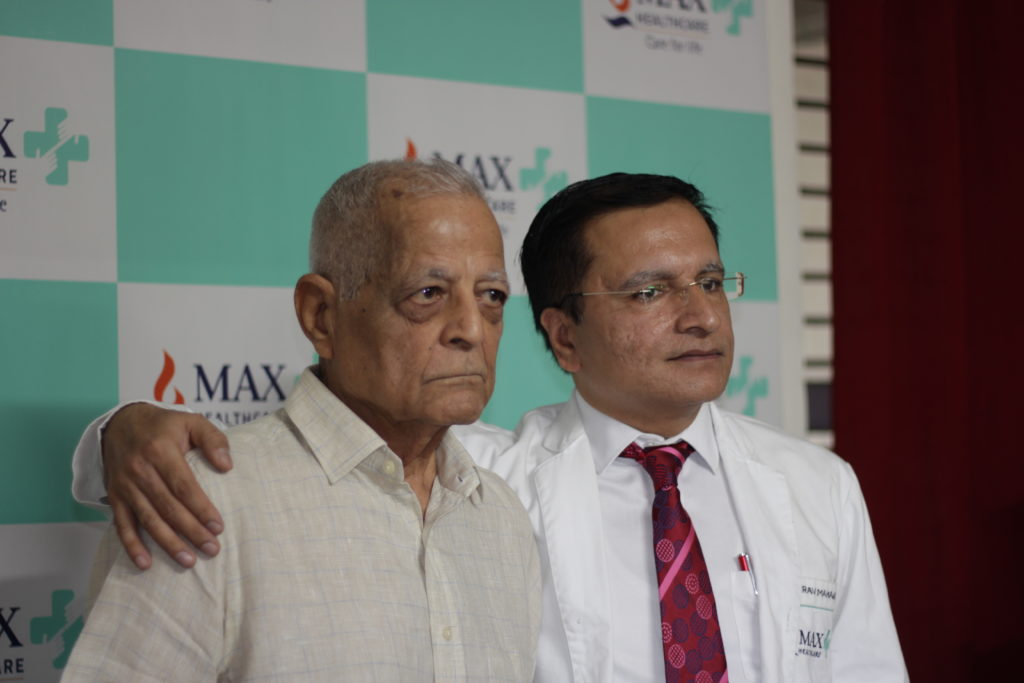Author : Akshay Raj Singh
Prompt response protocols by doctors at Max, Vaishali, prove that no case, howsoever delicate, is intractable.
An 83-year-old has got a new lease of life after a six-hour long complicated open heart surgery and is now safe and sound thanks to prompt medical care and procedures.
N.S Mehra, a retired businessman from Delhi, suffered a massive heart attack which was caused by a sudden blockage in the main artery in his heart, leading to the death of his heart muscle and a serious rupture in the wall of his heart’s left ventricle. He arrived at Max hospital, Vaishali, in a very serious condition with low blood pressure and his heartbeat pounding 140/min at twice the normal heart rate. There was hardly any time left with him and the doctors had to think on their feet as every passing second was valuable.
Within 25 mins of his arrival at the Emergency, he was in the OT and a multidisciplinary team of 10 members headed by Dr Gaurav Mahajan, Principal Consultant & Head, including clinicians, technicians, OT staff and nurses started operating on him and fought until they brought him back from the brink of death.
This team performed a high-risk open-heart surgery upon the patient. The ventricular rupture had resulted in internal bleeding causing accumulation of blood in the pericardium (the membrane enclosing the heart). The success of such a case is very rare given the slim operable timelines. But the doctors never gave up.
Dr Gaurav Mahajan, Principal Consultant & Head – CTVS, Max Super Speciality Hospital, Vaishali says, “In the majority of heart rupture cases, the patients are unable to reach the hospital in a treatable condition as the condition deteriorates at a life-threatening rate.
In this case, owing to effective emergency response, timely and accurate diagnosis and immediacy of surgery, we were able to save Mr Mehra. Being an aged individual with a history of hypertension, he suffered a sudden heart attack which ruptured the wall of the left ventricle of the heart leading to internal bleeding.
We repaired the rupture through a double suturing, also known as ‘double-layered repair’ using synthetic materials i.e. PTFE (Polytetrafluoroethylene) and the pericardium. After a week of post-surgery care and observation, Mr Mehra was discharged with a positive prognosis.”
He was discharged within a week of the surgery and is doing great. He even attended his grand daughter’s wedding within 20 days of being discharged. Says Mehra, “I feel like I have got a bonus that I am living on. I could remember some uneasiness in my heart and so I sat upon the sofa, I lost my consciousness and I was unconscious all throughout.
I had no idea when I was brought to the hospital and when I was treated, It was only after I gained consciousness the doctor said that I am out of danger and I had undergone heart surgery. I feel very great and don’t feel there is anything wrong with me now and I am very thankful to the doctor and his team who added extra days to my life.’

